Wildlife and Adventure Photography
A series to help you get great photographs (including wildlife) when travelling. The series includes volunteering and why it provides a serious alternative to traditional wildlife photography trips. It looks at some of the techniques photographers use to find subjects and get great results.I also share some of my more unusual trips including visiting the wreck of the RMS Titanic and climbing mount Kilimanjaro.This podcast is for those with an interest in photography, wildlife, conservation and adventure.
How to break through creative blocks

Send us a text
Are you tired of feeling stuck following endless photography rules, resulting in images that just… exist? What if I told you there's a way to unlock a deeper, more intuitive connection with your camera, allowing you to capture photographs that truly speak to the soul? In this podcast we’ll look at how you can move beyond rigid guidelines and embracing the organic flow of visual storytelling.
We will look at:
The Illusion of Rules; rules (like the rule of thirds) are often misinterpreted as unbreakable laws rather than help...
Which is best - YouTube or Courses?
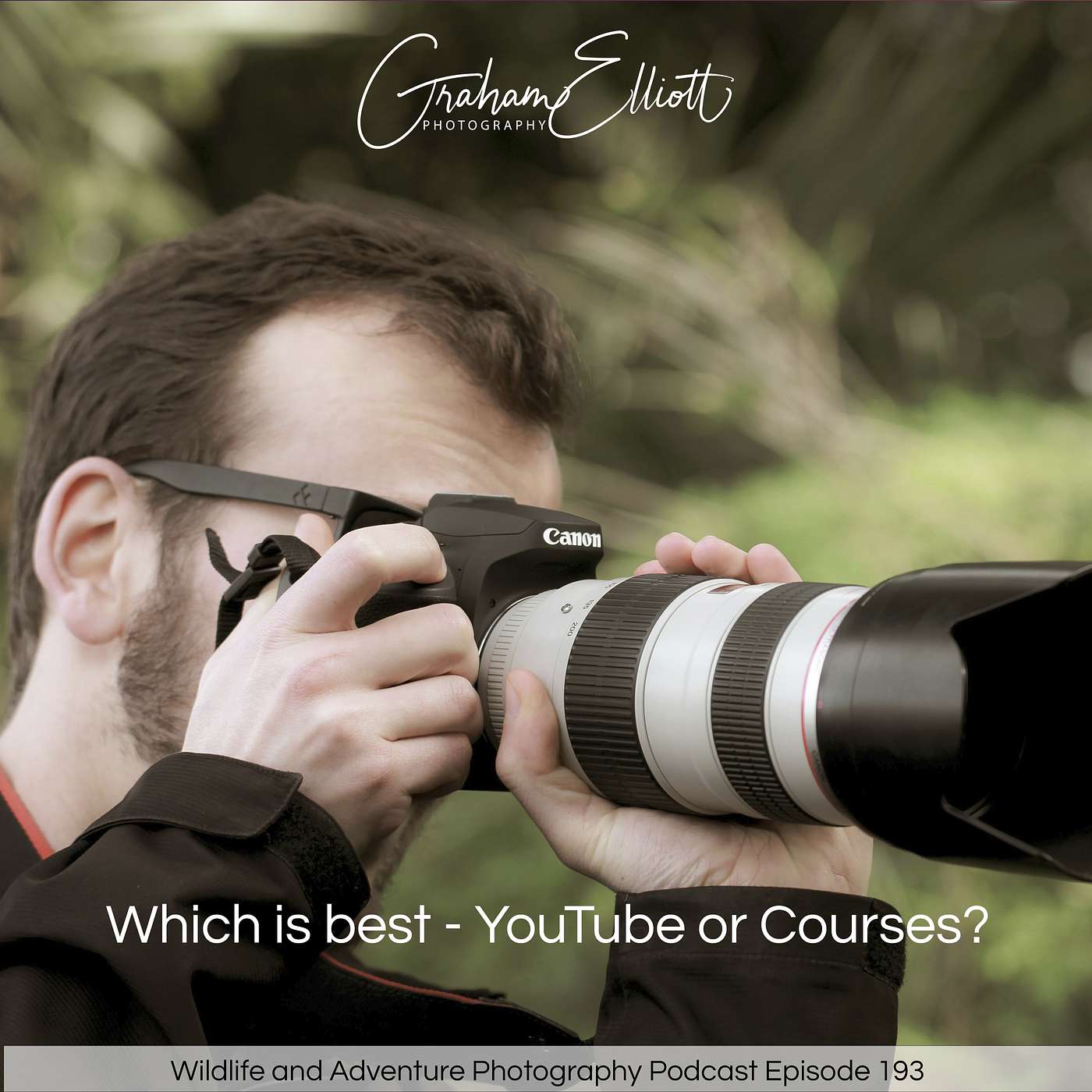
Send us a text
With so much free material available immediately on YouTube, is there any place for formal photography courses? That’s what I’ll be looking into in this podcast.
Please add your thoughts and comments in the comments section, or send an email to graham@ge.photography
The Appeal of Free YouTube Learning
Advantages:
Accessibility & CostBreadth of ContentEntertaining & Bite-SizedLimitations
Lack of structure; scattered lessonsQuality varies drasticallyRisk of “learning mode” without real skill progressionAlgorithm-driven rather than curriculum-drivenThe...
Wildlife and landscapes with Jeroen Van Nieuwenhove
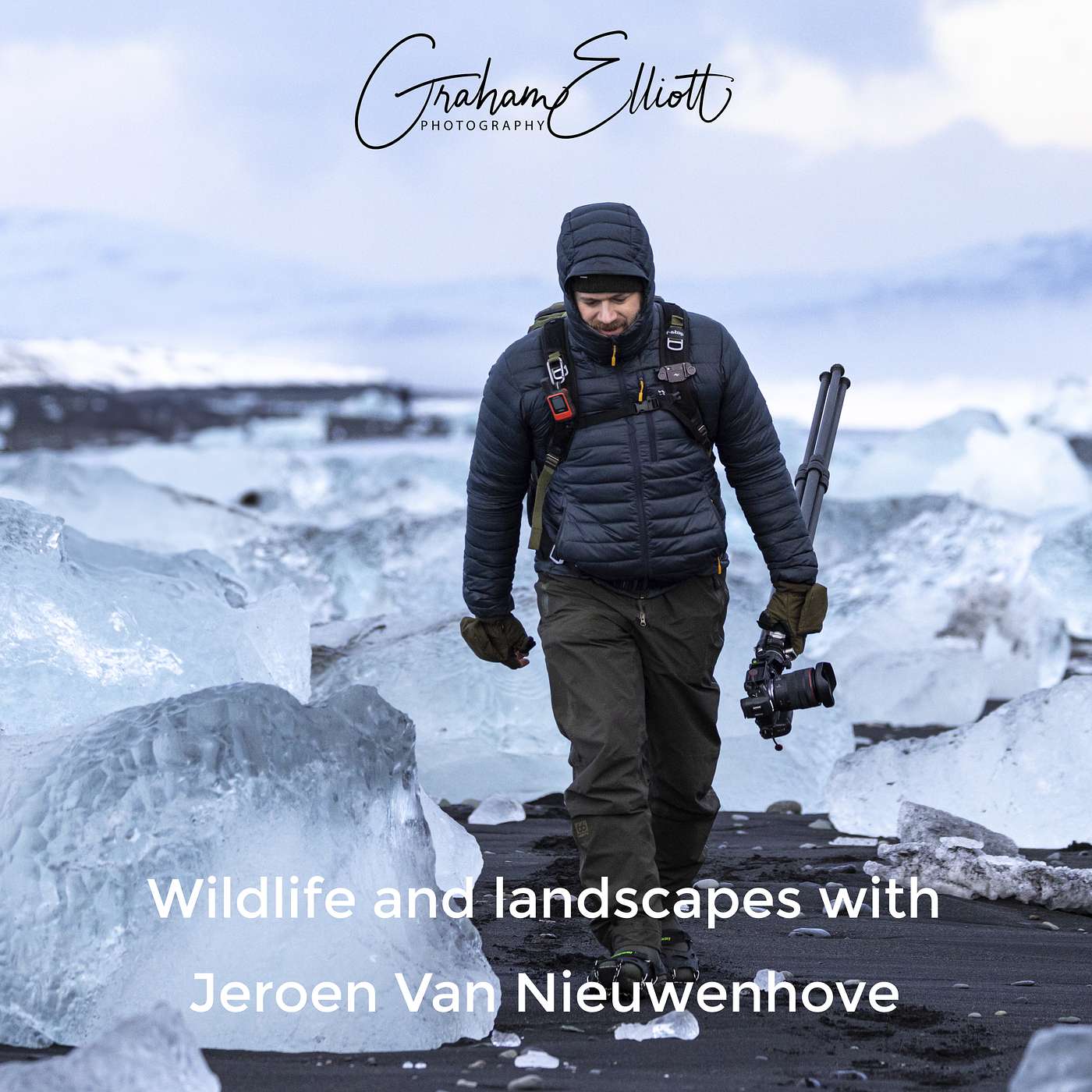
Send us a text
My guest on this podcast is Jeroen Van Nieuwenhove. Jeroen describes himself as a hybrid photographer, shooting both wildlife and landscapes. In this podcast, we talk about how he started in photography and he shares some of his experiences photographing wildlife in Iceland, where he lives, Greenland and Antarctica.
Jeroen shoots with both Canon mirrorless cameras and drones. He describes the difference that using drones has made to his photography and the equipment he currently uses.
He also runs workshops and shares his insights into the most common mistakes...
How to Avoid the Biggest Low-Light Photography Mistakes
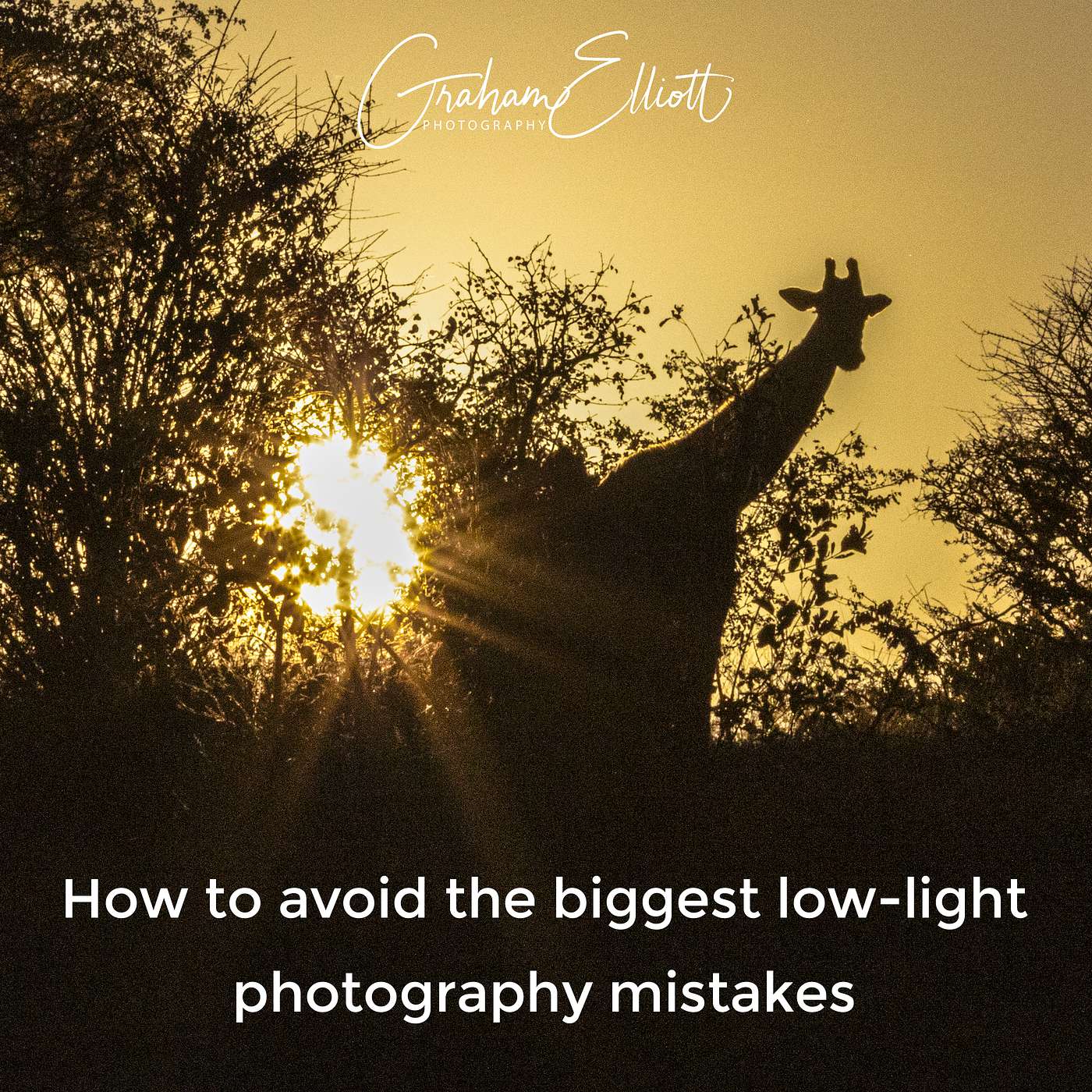
Send us a text
Understanding low-light photography opens up another world of possibilities for wildlife photography. The fact is that a good deal of activity happens once the sun has gone down, and it is very rewarding to be able to share the world that comes to life with people who might not be aware of it.
However, as always, there are a few things to remember and some mistakes to avoid. Here are the ten most common low-light photography mistakes:
Using Too Low an ISOShutter Speed Too SlowNot Using a Fast LensRelying Too...Why you should become an urban wildlife photographer

Send us a text
A major part of a successful wildlife photography experience is preparation. Doing the right preparation can make the difference between having a great experience and a frustrating one. The problem is that most of us do not have access to wildlife every day, or do we?
Getting to know your own area and the wildlife in it can give you access to all the wildlife you need to become confident when you do travel for your big trip. Most of us have our eyes wide open when we visit a new...
The future of wildlife photography, AI and ethics

Send us a text
AI has already had a big impact on digital photography, and you may be using it without realising it.
If you're using a smartphone, AI is driving scene recognition, HDR and exposure, and modes. For DSLR and Mirrorless users, it may well be driving your tracking and autofocus. It is widely used in post-processing to enhance images through noise reduction and the removal of unwanted objects.
So what are the considerations for photographers? I'll share some ideas with you in this podcast and take a look at the ethical i...
Mastering Wildlife Photography Part 8: How to showcase your best images

Send us a text
So you’ve taken your photographs and the adventure is over (for now). So what do you do with your images?
This is what we'll look at in this final episode:
Sharing Through Social MediaBuilding a Personal Website or PortfolioPrint Media: Books and MagazinesWall Art and Home Décor* CreativeHub recommends the largest print size for each print file you submit. This maintains print quality.Competitions and ExhibitionsEducational and Conservation UsesStock Photography and LicensingRemember to checkout my PDF eBook "A Brief Guide to Wildlife Photography", and sha...
Mastering Wildlife Photography Part 7: The Secret to Post-Processing Wildlife Images

Send us a text
You've got the shot, but there's more work to do. The first thing that you might notice is that what's in the camera isn't quite what you saw. And, you might not be happy with the actual image (vs what you had in you mind's eye). This is the starting point for post processing.
In this episode we look at the importance of post-processing:
Start with basic RAW AdjustmentsEnhancing Detail and Sharpness Colour Grading for Mood and StorytellingEthics of Editing Wildlife PhotosIf you're enjoying this series, please share yo...
Mastering Wildlife Photography Part 6: How to Capture Wildlife Portraits With Personality

Send us a text
In my opinion, portraits can be the most powerful way for someone to connect with an animal. And possibly feel a real connection with it for the first time. So, mastering animal photography is possibly the most important aspect of wildlife photography to master.
In this episode we'll look at:
What is a wildlife portrait?Capturing Emotion & Personality Field Techniques & Ethics Storytelling Through Portraits Common Challenges & How to Overcome ThemPro Tips & Creative ApproachesNext episode:
Having captured your subject, we’ll look at how...
Mastering Wildlife Photography Part 5: The Secret of Photographing in Harsh Environments
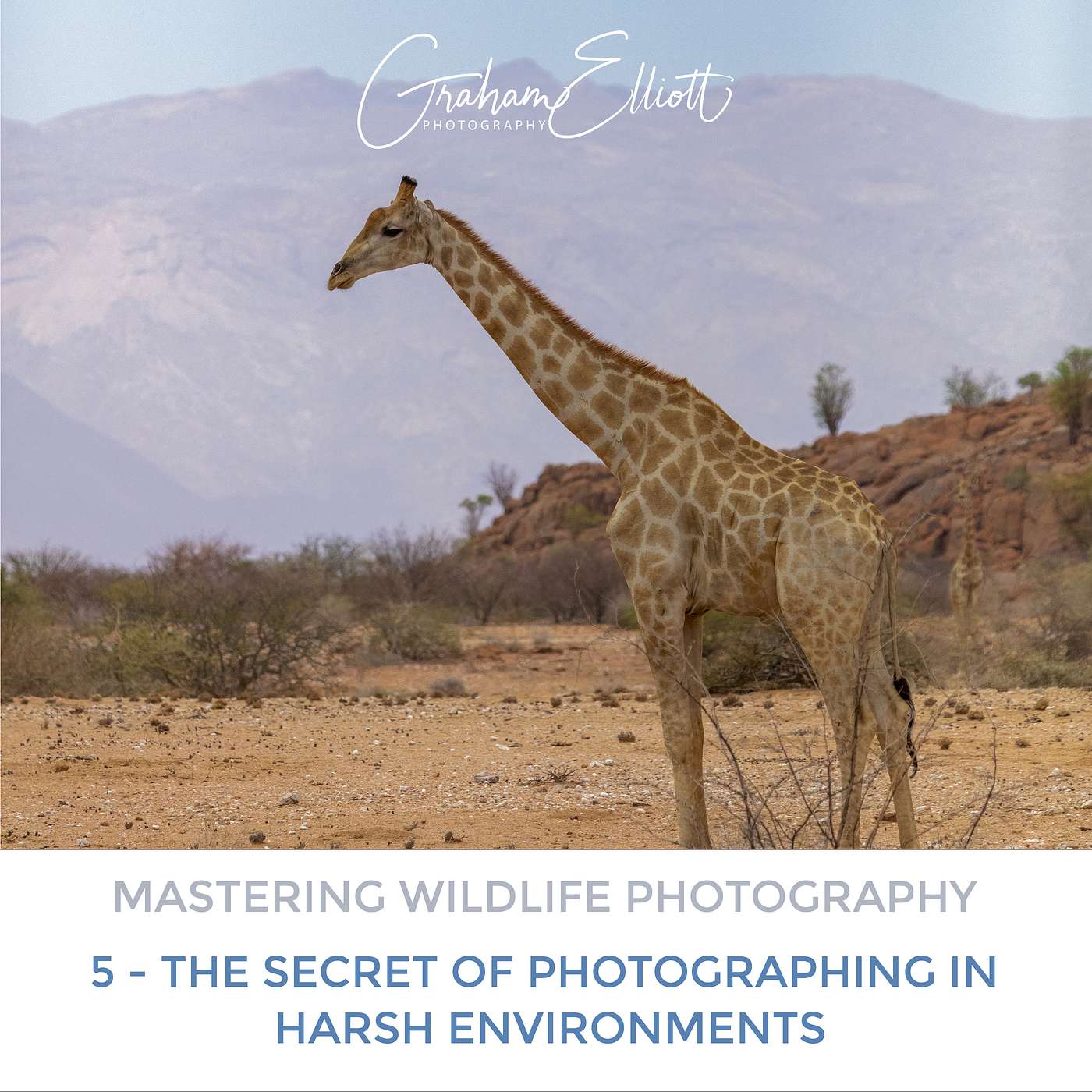
Send us a text
Wildlife doesn’t always live in comfortable places. Sometimes, the most incredible images come from the toughest conditions: cold, blistering heat, or sudden storms. Today, we’ll uncover the secret of thriving in those environments.
These conditions test photographers both physically and mentally. But fewer people are willing to endure them, so you have a great opportunity to shoot unique images.
In this episode, we'll look at:
Preparation Protecting Your Gear Shooting Techniques in Harsh ConditionsMindset: Embrace the Challenge.Safety FirstRemember to check out my PDF "A Bri...
Mastering Wildlife Photography Part 4: How to Freeze Fast Action in Wildlife Photography

Send us a text
In this episode, we'll take a look at the best ways to capture fast-moving action.
The Challenge of Wildlife Action Shots Camera Settings for Freezing MotionAnticipating the ActionPanning & TrackingGear ConsiderationsCreative Motion ChoicesShare your experiences and images in the Facebook Group.
Next time, we’ll talk about how to handle harsh environments.
Check out my PDF “A Brief Guide to Wildlife Photography” for more ideas.
Please remember to LIKE and SUBSCRIBE.
It's time for another podcast...
Mastering Wildlife Photography Part 3: How to Use Light to Capture Wildlife at Its Best
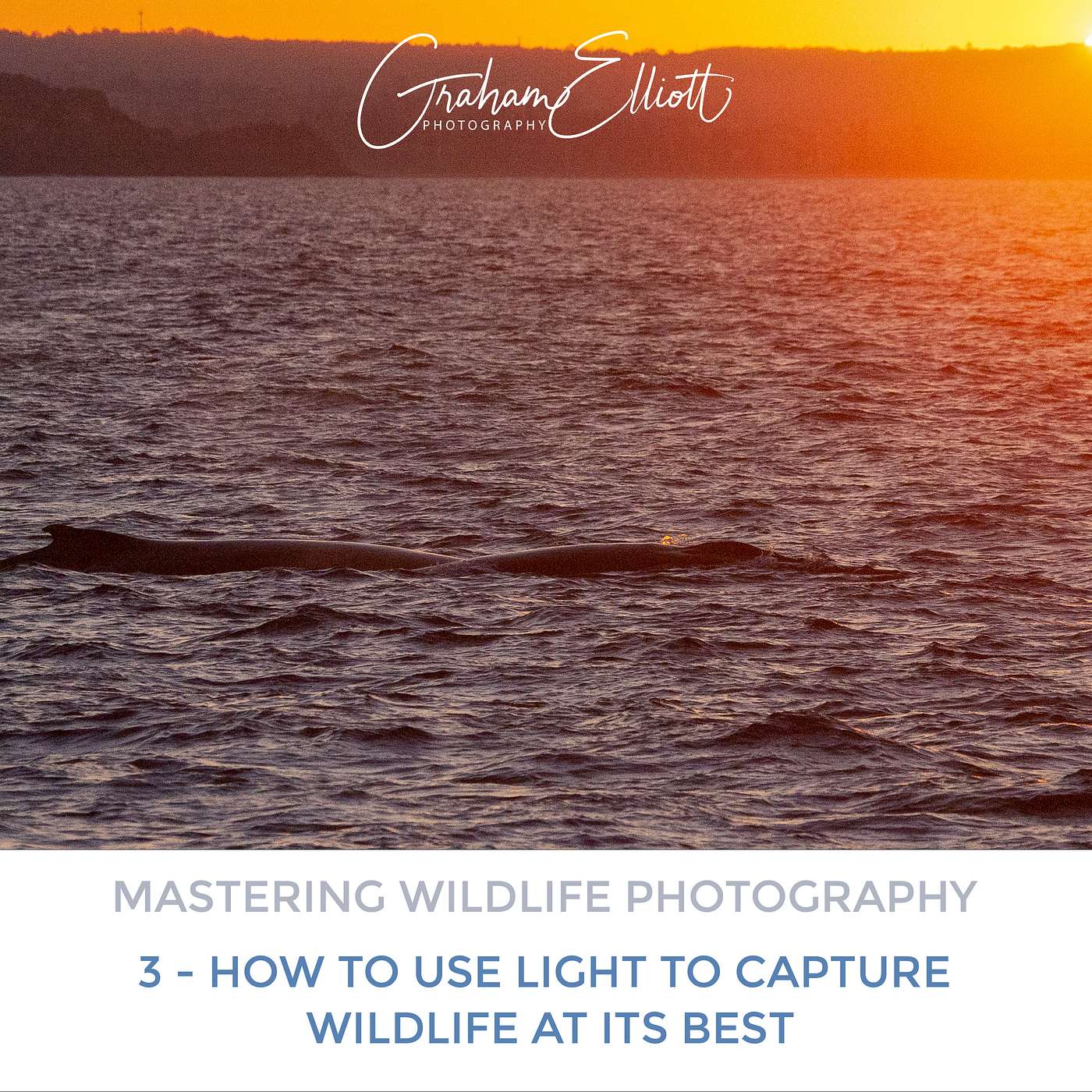
Send us a text
This episode is about using light. Using it well can make the difference between a magical shot and one that is flat and uninteresting. Here's what I'll cover in this episode:
The Role of Light in Wildlife Photography Golden Hours & Blue HoursMidday Light ChallengesBacklighting, Side Lighting & Front Lighting Weather & Light Conditions Camera Settings for LightShare your experiences and images in the Facebook Group.
Next time, we’ll talk about how to photograph subjects that are moving fast.
Check out my PDF “A Brief Guide to W...
Mastering Wildlife Photography Part 2: The Secret to Getting Close Without Disturbing Wildlife
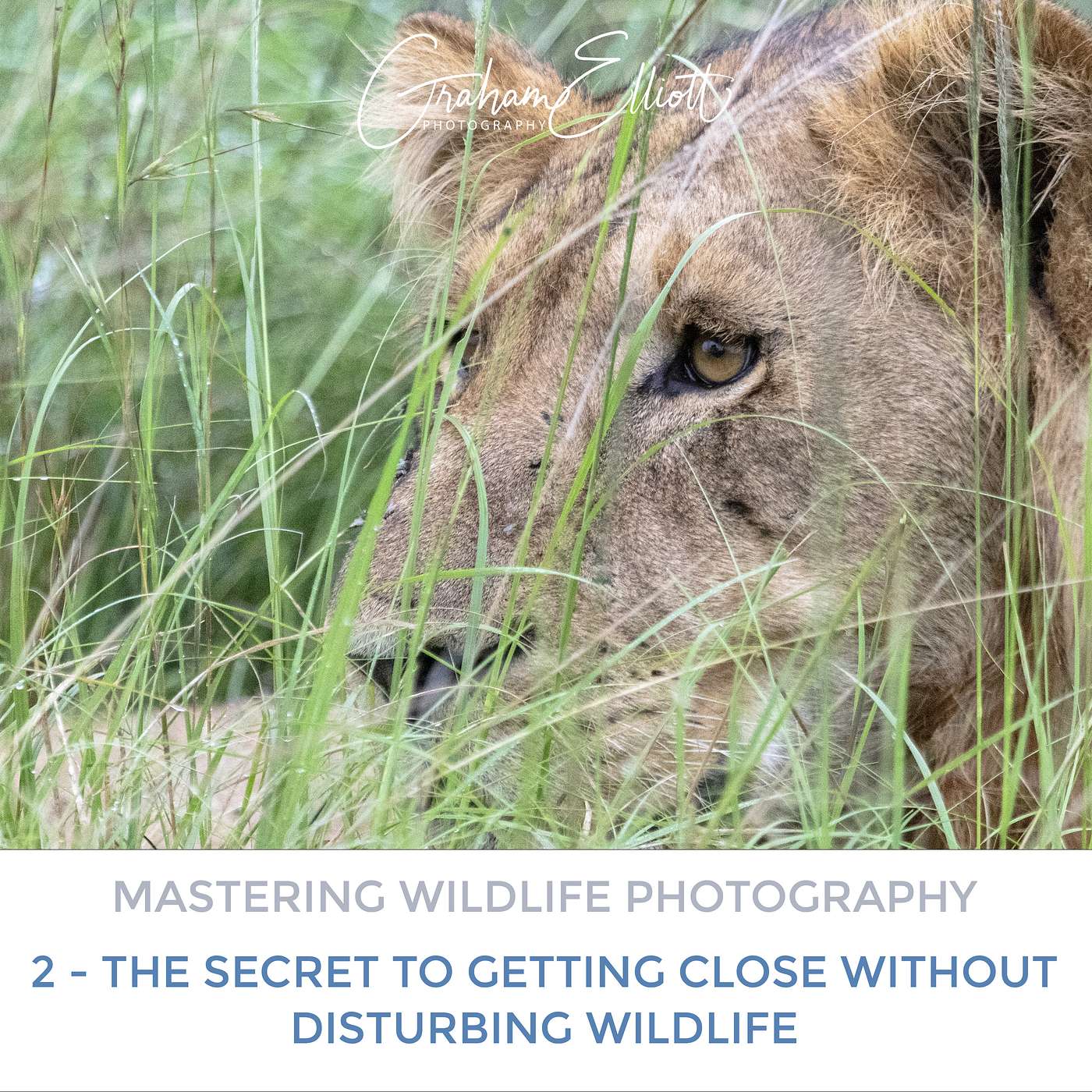
Send us a text
Last time, we looked at preparation and the important things to consider before you go. In this episode, I share some of the ways that you can get ‘close’ to wildlife ethically.
Here's what I'll cover in this episode:
Ethics Understand animal behaviour Stealth techniques Using Distance & LensesLet wildlife come to youNext episode:
Next time, we’ll look at how to use natural light effectively.
For more information:
Check out my PDF “A Brief Guide to Wildlife Photography” for more ideas...
Mastering Wildlife Photography Part 1: How to prepare for a wildlife photography adventure
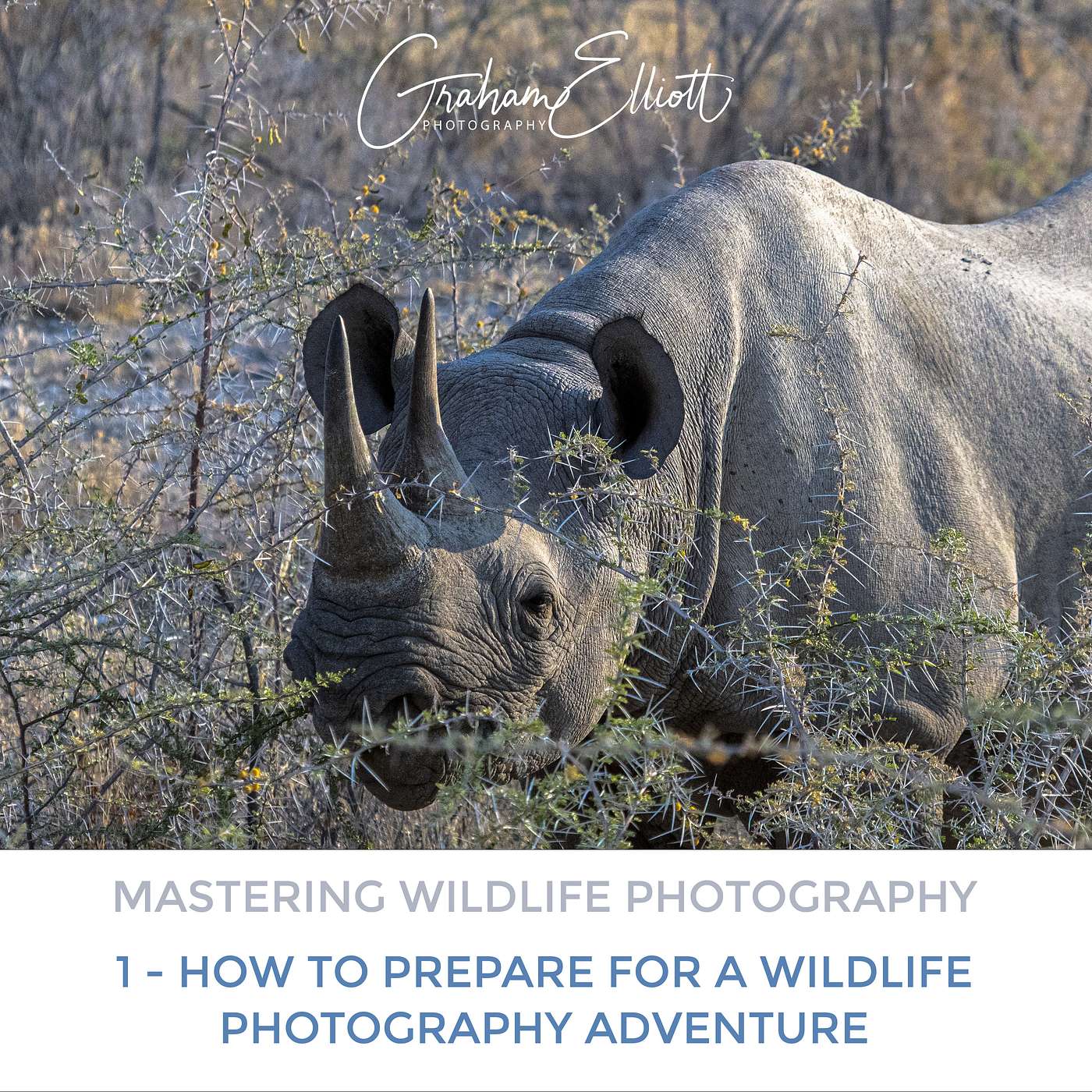
Send us a text
This is episode one of eight, where we will take a deeper dive into how to take great wildlife photographs.
We’re going to start with preparation. Good preparation can make all the difference between a successful shoot and a complete disaster.
Here are the key things I'll cover in this episode:
Research & Planning Gear & Equipment Health & Safety Mindset & PatienceNext episode:
Next time, we’ll dive into the secrets of getting close to wildlife without disturbing them. Trust me, you won’t want to mis...
Why the 'Perfect' shot is overrated
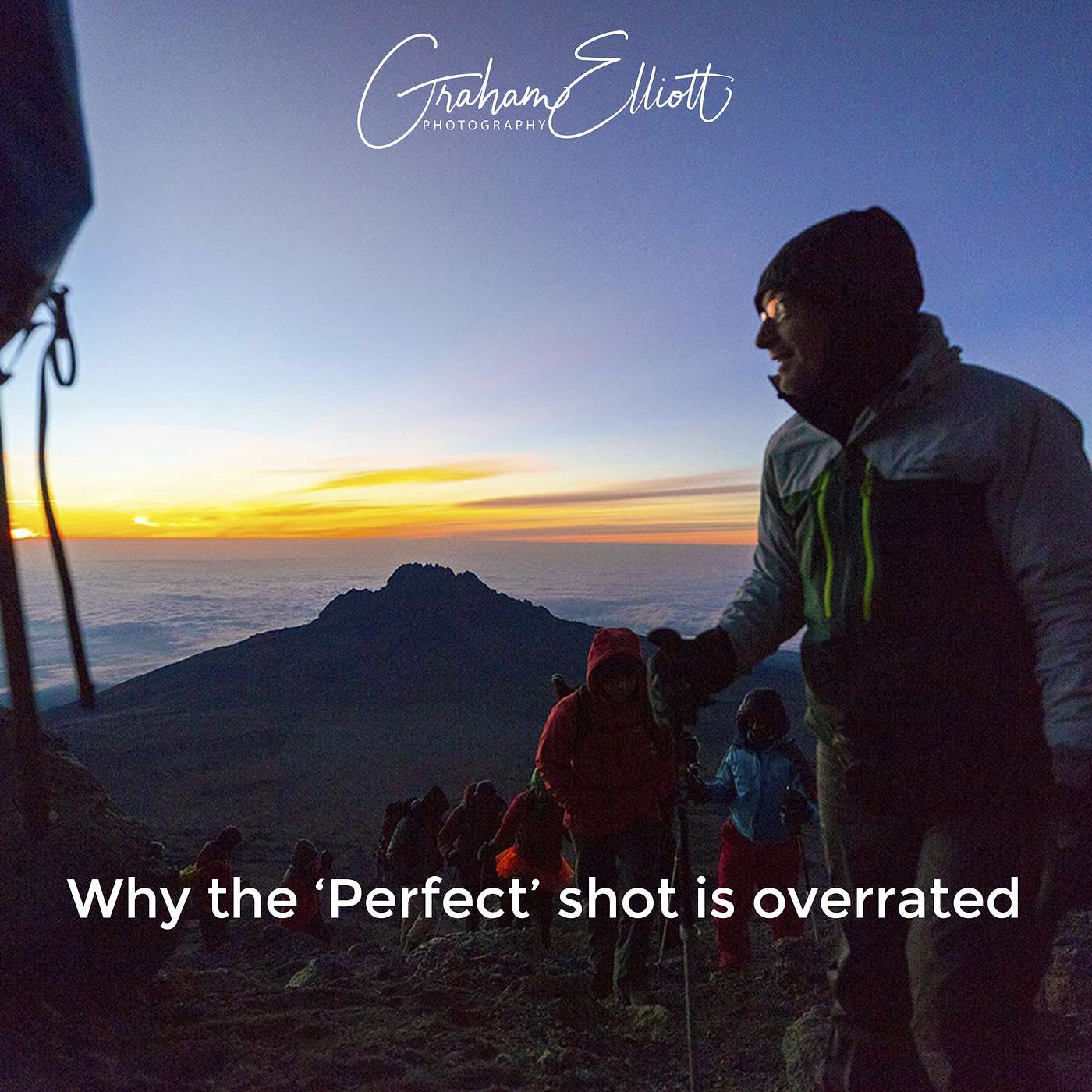
Send us a text
Do you ever feel stuck, endlessly tweaking photos, searching for that 'perfect' look that seems just out of reach? You're not alone. We've all been conditioned to believe in a singular ideal of photographic perfection. But what if I told you that once you understand the truth about the 'perfect shot,' you'll not only take better photos but also find more joy in your photography? Let's discover why.
There are two photography quotes that I particularly like:
Ansel Adams: “There is nothing worse than a sharp image of...
The beauty of the unseen: Everyday scenes through a photographers eyes
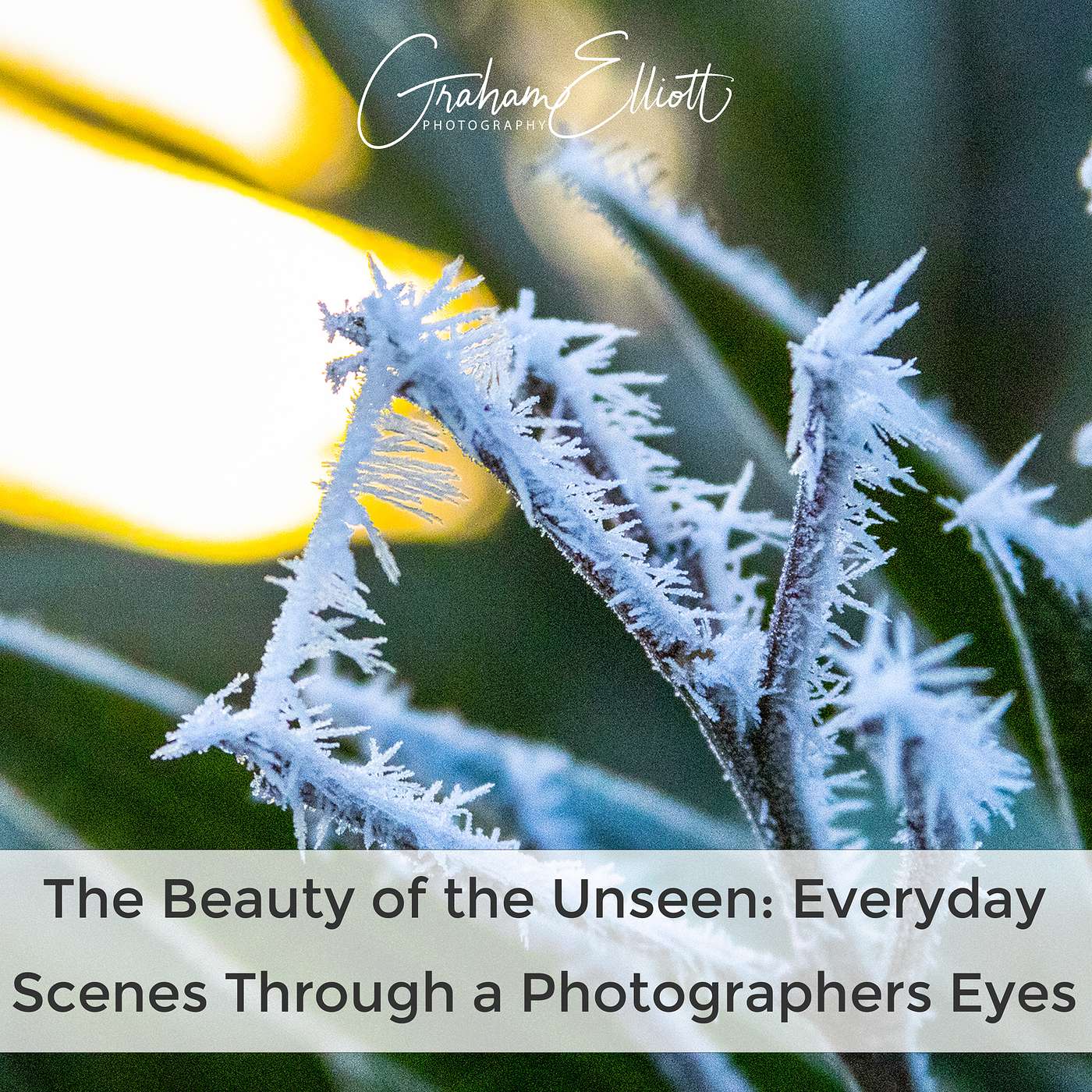
Send us a text
I used to use Circular Quay in Sydney quite regularly, but never noticed the little dolphins in the railing by the ferry terminal. The first part of photographing the “unseen” is to see it! And we covered that to some extent in the last podcast.
If you’ve tried the exercises from the previous podcast, you may well have found that there are a lot of details in your everyday environment that you’ve previously overlooked. And, no doubt, some of them have a beauty all of their own.
This pod...
See the world like a photographer

Send us a text
Have you ever walked past something beautiful without even noticing it?
If you have, you’re not alone, and this is a skill that separates great photographers from the people who take snapshots.
Great photographers really look and see what is there. And it goes beyond simply seeing something. They take it further and apply the important elements that make up a great photograph:
They’re looking at the light, perhaps how it changes, where it is coming from, lines, emotions and which compositions would bring out the m...
How Creative Constraints can improve your photography
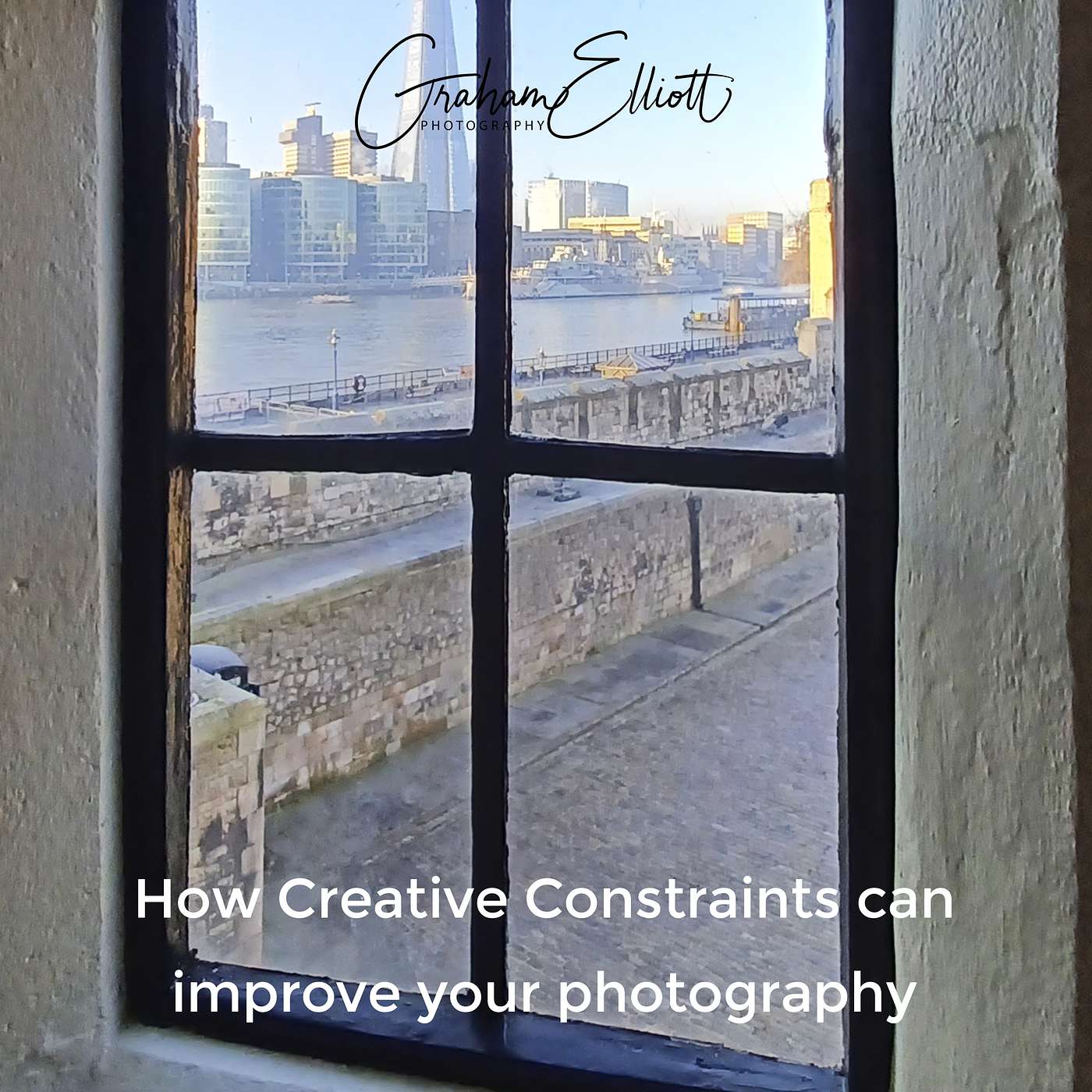
Send us a text
I often recommend that you practice as often as possible to improve your photography. But what do you do when you hit a mental blank?
One idea I suggest in this podcast is to shoot a series of photos, or a collection. And, to make them more coherent, and to challenge yourself, I suggest you use a Creative Constraint.
So what is a Creative Constraint? Here are some examples:
Technical:
Shoot only in black and whiteUse only one lensLimit yourself to manual focus (or full manual...The Secrets to Great Wildlife Photography

Send us a text
If you’re listening to this podcast, it’s probably safe for me to assume that you want to take great wildlife photographs. So what are the things you need to think about?
I’ve tried to run through an almost step-by-step guide based on my own recent experience of photographing wildlife in Zimbabwe, Australia and Finland.
Camera: Take the body and lens (possibly plural) that most suits your needs. And think about ancillary items; storage, battery charger, mains adaptors, USB chargers, cleaning kit, tripod and tripod head...
Speaking with Kara Sheldon - Project Ecologist

Send us a text
Kara Sheldon is the ecologist and one of the directors of the Southern Africa Field Conservation Project. SAFCP was formed following the participation of the directors in a local conservation project largely run by Dean and Justine McGregor. I joined it as a ‘guinea pig’ for the first run of a conservation programme that they hope with contribute significantly to local conservation efforts.
The project is located at the Woodlands Community Reserve, located just outside the town of Victoria Falls in Zimbabwe.
In this podcast, Kara discussed the aims of t...
Speaking with Dean McGregor - Professional Guide

Send us a text
In today’s podcast, I talk to professional guide, Dean McGregor. Dean has a vast knowledge of the flora and fauna of his native Zimbabwe. I first met him in early 2020 and spent as much time as I could learning from him.
In this podcast, I talk to Dean about what got him interested in becoming a professional guide, how he goes about guiding clients and what you should expect as a client of Deans.
Dean is involved with several local groups, including the Southern Africa Field Conservation Project wh...
Top tips for great smartphone photography

Send us a text
A few podcasts ago I spoke about what to think about when buying a camera. However, most of us carry around a smartphone and some of these cameras can outperform pro cameras.
So here are some tips to help you to get the most from your smartphone:
Keep your lenses clean!When you have your subject where you want it, tap on the subject on the smartphone screen. That tells the camera where to focus and you should also see a slider control appear. Use this to make the image...The secrets to great night photography

Send us a text
Night photography can be incredibly rewarding, and it's a great way to improve your general photographic skills. So what do you need to think about?
Equipment:
A DSLR or Mirrorless camera with manual mode.A fast lensA tripodA Remote Shutter ReleaseExtra batteries for cold conditionsCamera settings:
Use the widest aperture you canExperiment with shutter speedExperiment with ISO (to minimise noise)Use manual focusLight and exposure
Get familiar with your cameras' limits in low lightBe aware of light pollution and choose your site accordinglyExperiment with...The Secret to Finding Your Unique Style Through Projects

Send us a text
I've spoken about style and creativity in recent podcasts and I realise that some people don't think of themselves as creative and feel they don't have a style at all.
So, my suggestion to you is that you accept that you are creative (possibly not the most creative person you know, but it's there all the same) and that you give yourself permission to try some new ideas!
A great way to develop your style and begin your creative journey is to do a challenge. In this podcast, I t...
How to choose your next camera

Send us a text
Choosing your next, or possibly first, camera is a big decision. You might have some experience of photography, through either a camera system or your smartphone, or you might be completely new to it.
Here are some key considerations:
Budget - this will be a big factor for most of us. It will also depend upon your commitment; are you serious about photography, or just trying it out? Is it a potential career, or a hobby for when you have a vacation?
New or old - One...
How to create blurry photos and why you might want to

Send us a text
Creating blurry photographs is not necessarily at the top of things you want to achieve during a shoot. However, as with other 'problem' areas, understanding what causes blur can open up a whole range of creative options, and that is the focus of this podcast.
The type of blur you have can usually be reduced to one of the following causes:
Motion blur: Where either the subject or the camera moves while the shutter is open.Focus blur: The focus is set incorrectly, or you have insufficient depth of field...What is your photographic style and does it matter?

Send us a text
Do you have a style?
Have you even thought about it?
Whether we know it or not, we all have a photographic style, and, the chances are that the style you have today is not the same as it was when you started. So, does it really matter?
If you want to develop a particular style, there's a lot of inspiration out there. One of the popular trends at the moment is to shoot photographs that mimic the early, low-resolution digital cameras. Or you might be inspired b...
How to overcome common photography issues

Send us a text
These are some of the most common issues faces many photographers... and what you can do about them:
Gear ObsessionLack of Clear VisionInconsistent QualityOvereditingDifficulty Building a PortfolioFear of CriticismTime ManagementFinancial ChallengesComparisons and Imposter SyndromeI hope you enjoy the podcast!
It's time for another podcast...
Please take a look at the 2026 Wildlife Calendar. It's available now.
Support the show
Have you bought your 2026 Wildlife Calendar yet?
Find out more by clicking here
Support the show
The secrets to great wildlife photographs

Send us a text
What are the most important things to focus on when you are planning a wildlife photography shoot?
Here are my suggestions:
Research - The better you know your subject, the better the chances that you can create stunning images that create a strong emotional connection with the viewer.
Local Guides and Safety - You want to have the best possible experience. Good local guides will know how to track the animals and help you to stay safe.
Know your equipment<...
How to Tell Powerful Stories with Your Camera

Send us a text
We love stories. So, if you use a storytelling approach to your photography, you are more likely to create images and sequences of images that engage viewers.
There are two aspects to storytelling; the story of each image itself (and I’ve spoken about this in other podcasts), and the story that ties together a sequence of images.
A good way to approach this is to think of each stage as a chapter. If you are travelling, or going on an adventure, what are the key steps?
Fo...
The secrets to great black-and-white photography

Send us a text
If you've never tried black-and-white photography before, I recommend it as a great way to broaden your creativity.
We are used to seeing things in colour, so black and white photography lets us see things differently, perhaps seeing aspects of things around us that we've never appreciated before.
These are the things to be conscious of when shooting in black and white:
Shapes and texturesTonal variationContrastGrain/digital noiseCompositionPatternsEmotional impactNostalgiaMinimalismShooting in RAWPractice shooting in black-and-white until you can visualise subjects in black and white before you photograph...
Leave No Trace: Tips for Ethical Photography

Send us a text
I’m a big believer in ‘ethical photography’. I believe that, as photographers, we are in a great position to record what is happening in our environment and share our stories with others.
One of the aspects of photojournalism is to be able to objectively record what is happening and provide a visual record of events.
If conservation is important to you and you want to minimise your impact on the environment, there are several things you can do:
Research and Planning
Understanding the spe...
The secrets to successful event photography

Send us a text
What is an event? For the purposes of this podcast, I'm assuming that you are not a professional event photographer. It may be that you have a nice camera and that, in the eyes of your friends, means that you can photograph anything!
So, what do you need to think about? In this podcast, I'll talk about:
The kinds of cameras to use, lenses and other accessoriesHow to go about building a relationship with your 'client(s)'How to put together a shoot listThe technical considerations (and possible practice scenarios...How to choose between Aperture and Shutter Speed Priority

Send us a text
Using Aperture and Shutter Speed modes (however they are identified in your camera) is the best way to indulge your creativity while getting the camera to do a lot of the ‘heavy lifting’ for you.
Your choices are Aperture Priority (where Depth of Field is the dominant creative element) and Shutter Speed Priority (where it’s all about movement). But which is best?
In this podcast, I’ll take you through the decision-making process that I use (and I have my favourite mode… and it might not be yours!).
There...
How to get started in wildlife photography

Send us a text
Wildlife photography is one of the most rewarding styles of photography and it has some unique challenges.
Before you rush out with your camera to shoot wildlife, there are a few things to consider. I'll cover a few in this podcast:
Your subjects are wild and you may not even find themThey will often be far awayThings can happen quickly, so you must always be readyYou will have to contend with varying conditions:LightWeatherTemperatureAnd, in addition to choosing the right camera equipment, you need to make sure that...
7 Reasons to use Post-Processing

Send us a text
Do you use post-processing in your digital photography? For me, post processing is the third step in successful photography (after visualising the final image and taking it). Post-processing can be used to correct errors, change the framing and emphasis of an image and turn an average photograph into something outstanding!
Here are seven reasons to use post-processing...
If you like the podcast and have received value from it, Please remember to Like and Subscribe. It takes a moment and makes a big difference to me.
And... if you...
How to shoot successful portraits

Send us a text
What’s the one mistake most portrait photographers don’t realize they’re making—and how could fixing it instantly elevate your shots?
The most important thing you can do is to connect with your subject(s). Be a person to them before you are a photographer.
Ask them about their previous experiences.Find out what is most important to them and what the shoot is for.Be aware of the lighting.Always give positive feedback.Show them how to pose.Use the background to add context to their story.Think ab...Speaking with international filmmaker and wildlife conservationist Suyash Keshari

Send us a text
Today I had the pleasure of speaking with Suyash Keshari. Suyash Keshari is an International TV Presenter, Filmmaker, and Wildlife Conservationist. He’s globally recognized for his innovative work in virtual safaris, documentaries, and specializing in high-end guided safaris across India and Africa.
He is also the founder of Ameliya Safaris - a brand that specializes in blending luxury wildlife experiences with conservation and social impact.
Our conversation covered conservation, eco-tourism and other subjects that we are both passionate about.
For more information about Ameliya Safaris, please ta...
The secrets to great landscape photographs

Send us a text
If you like shooting landscapes, I've a few suggestions to help you to create images with more impact, and provide you with a more enjoyable experience into the bargain:
1. Plan Ahead
2. Use the Right Equipment
3. Master Camera Settings
4. Compose Thoughtfully
5. Optimize Lighting
6. Use the Right Perspective
7. Incorporate Motion
8. Understand and Control Exposure
9. Post-Process Thoughtfully
10. Patience is Key
11. Experiment.
12. Respect Nature
Practice regularly!
<...
How to plan a shoot, with Graham Elliott and Shane Rozario

Send us a text
Whether you're planning a commercial shoot for a client, or you're getting ready to travel to photograph wildlife, there are certain steps you should follow. Spending a little extra time at the planning stage can make the shoot itself go much more smoothly.
Shane and Graham talk through some of the steps they've used to prepare for their different styles of photography and share some stories along the way.
This includes the importance of becoming part of a photography community, and why you should continue to invest in your...
